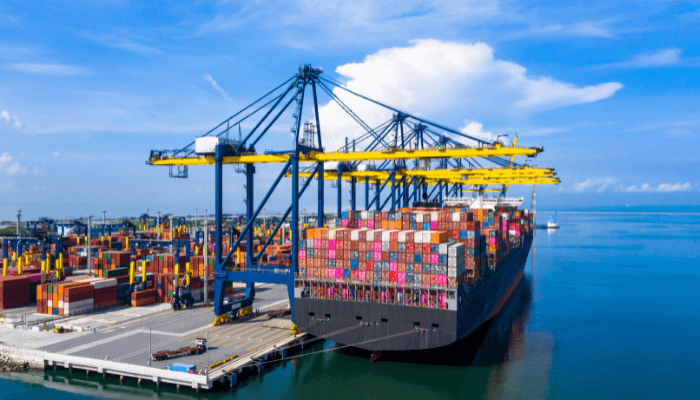Anchorages are continuously filling with waiting container vessels of the East and Gulf Coast ports, where vessel queues have now outgrown those off the West Coast. Along the three coasts combined, the numbers of waiting container vessels are still exceptionally high.
About 125 container vessels were waiting off the ports of North America as reported on Friday morning, per an analysis of the ship-tracking data provided by MarineTraffic and queue from California.
That indicates a drop of 16% from 150 waiting vessels observed in January when the West Coast congestion had reportedly peaked, but it is also up by 36% from 92 ships reported a month before.
The shipping queue off Los Angeles and Long Beach garnered the majority of headlines in 2021. However, the epicenter has shifted: As of Friday, 36% of waiting vessels were off the ports of the West Coast, with 64% off the Gulf Coast and East Coast ports. Savannah in Georgia has the maximum ship queue reported in North America.
Container ships waiting off the US and British Columbia ports on Friday had a cumulative capacity of nearly 1,037,164 20-foot equivalent units (TEUs).
The estimated value of the total cargo waiting offshore on Friday crossed $40 billion.
Volumes shift to the East
Project44 tracks the arriving TEU capacity monthly for the West Coast vs. the ports of the East Coast. It observed that the capacity in June heading toward the East Coast was up by 83% on a year-on-year basis. It was 177% compared to that reported in June 2020. The East Coast-specific capacity is on par with the West Coast, which has reduced by nearly 40% since the peak observed in January. Project44 says this shift is due to importer fears resulting from West Coast port labor disruptions.
Queues of the /Gulf Coast
The waiting time for a berth in Savannah is 10-12 days, per an update shared by Hapag-Lloyd this week. The carrier placed yard utilization at 89% in Savannah.
The second largest queue on the East Coast is off New York and New Jersey. As of Friday morning, 20 vessels were waiting with a capacity of 180,908 TEUs, whereas the average size is 9,045 TEUs.
Hapag-Lloyd reported that the waiting time for berths in New York and New Jersey was 20 days based on the terminal. Yard utilization at Maher was 92%, at GCT Bayonne, it was 75%, and at APM Terminals, 72%.
On the Gulf Coast, 20 vessels were off Houston, waiting with a capacity of 121,196 TEUs, while the average size is not more than 6,060 TEUs. Per Hapag-Lloyd, utilization at Barbours Cut terminal in Houston was 86%, and terminals continue experiencing equipment shortages for chassis owing to extended street dwells.
Elsewhere on the Gulf and East coasts, two vessels were waiting off Virginia and another two off New Orleans.
West Coast queue reports
Per the Friday 7 am queuing list received from the Marine Exchange of Southern California, 24 container vessels were waiting to berth in Los Angeles and Long Beach, with a capacity of 208,903 TEUs and an average size of 8,704 TEUs.
This backlog is sharply down from 109 ships as observed on 9 January. However, it remains the second largest shipping queue in North America. The Los Angeles and Long Beach ship count keeps hovering around the current level. It has been this way since the end of May and is up slightly yearly.
In other places on the West Coast, almost ten vessels were waiting to berth in Oakland, per the Friday 7 am queuing list reports from the Marine Exchange based in the San Francisco Bay Region. The ships had a capacity of 79,712 TEUs with an average size of 7,971 TEUs.
Eight additional vessels had been waiting to berth in Vancouver in British Columbia, with a further three off Seattle and Tacoma.






